Do you ever complete a STEM challenge focusing on math skills? I have some ideas to share with you to tackle that M in STEM!
Let’s talk about specific math skills and how you design a build something while using those skills! My students love getting out meter sticks and calculators, and diving into projects!
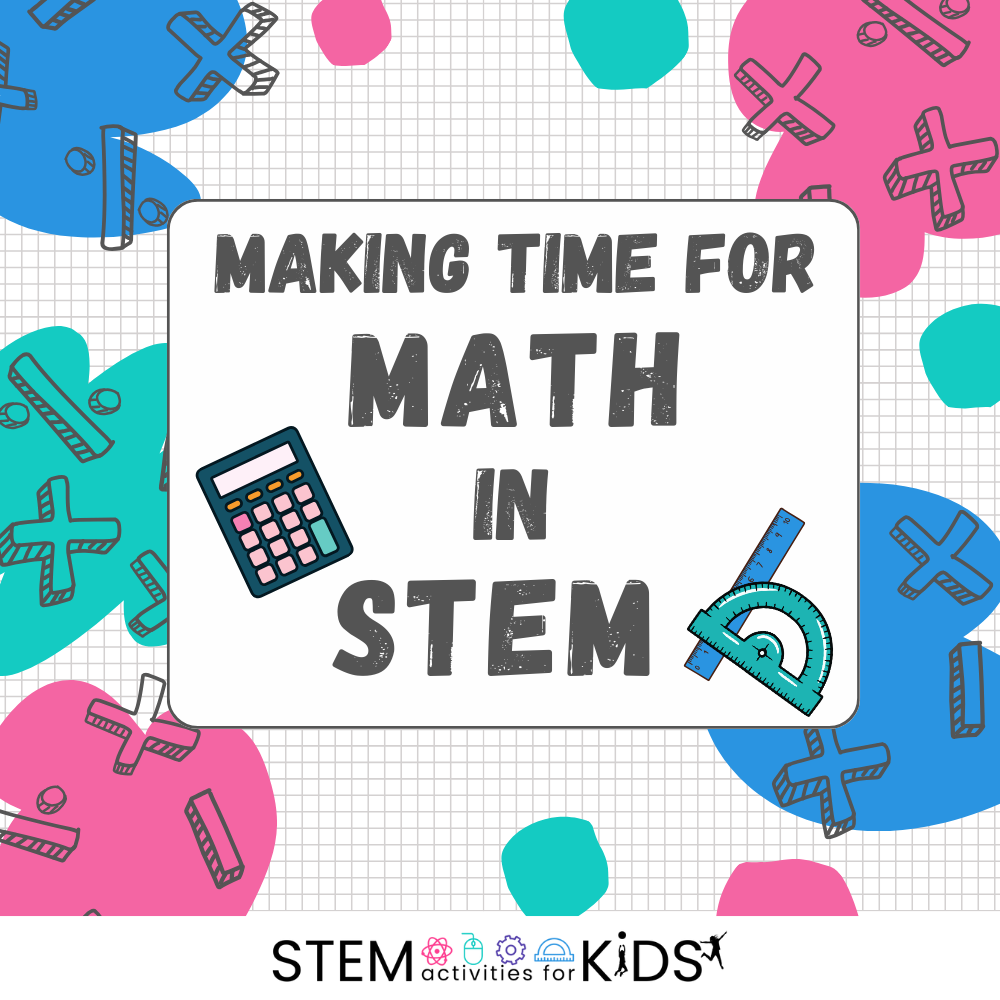
Focus on the M in STEM – Measurement
To be very honest with you, the M is the easiest part! Mathematics is just a very natural fit with science and STEM projects. We measure and calculate all the time as part of STEM projects or experiments.
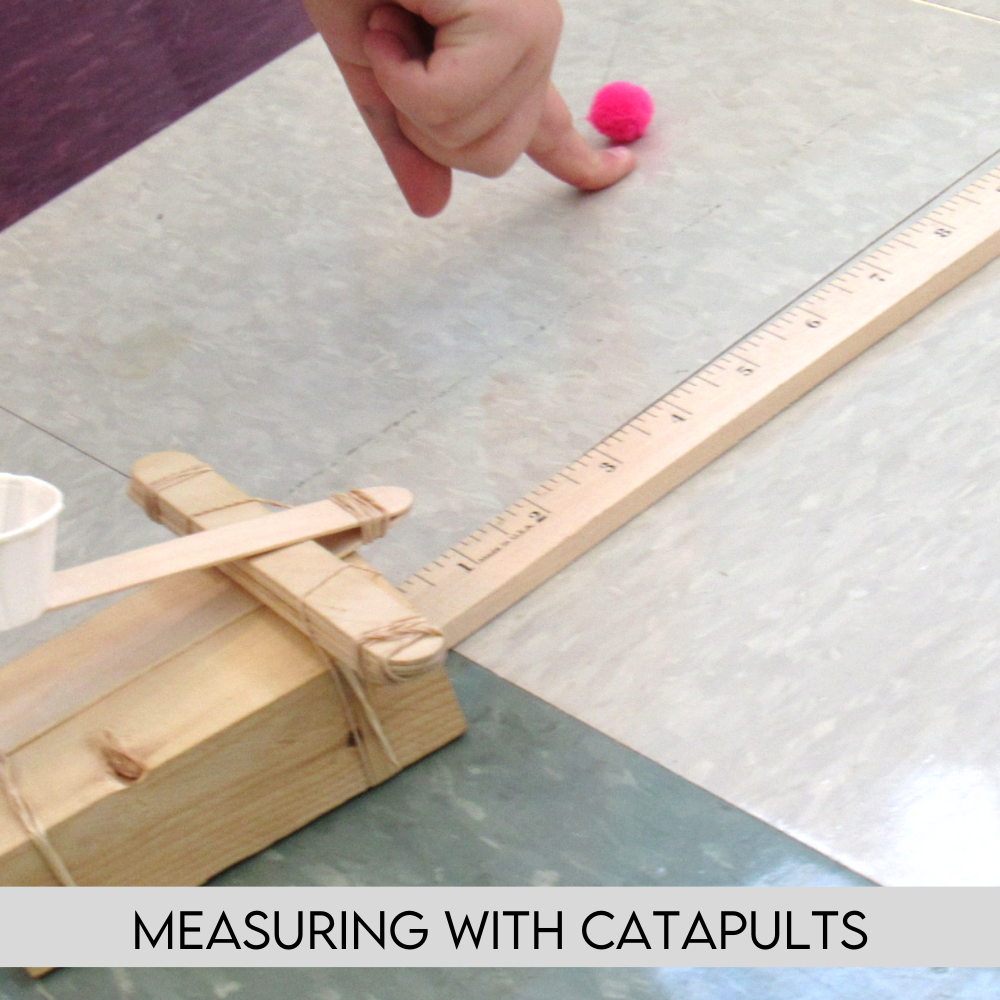
I have a bin of meter sticks that we use and every lab table has its own rulers. We almost always measure the height of towers in centimeters and we measure long distances in centimeters. For an airplane challenge, we use a meter tape, measure in meters, and then calculate distance averages. See what I mean, math is a natural fit.
Here’s a quick hint for you- if you have square floor tiles (like I do) use those to measure to make the task easier for kids. We sometimes use those tiles and count them, multiply by 12, and only measure the extra distance that is not part of a whole tile. This gives the kids practice with those 12’s times facts and makes the measuring faster.
The Catapult Challenge in the photo relies on measurement for our projectiles and we test them many times. Then, students use calculators to find the average distance of each trial. How fun is this!
Focus on the M in STEM – Volume
But, what about other areas of math? How can you include that in STEM class? I have 2 fabulous challenges about volume!
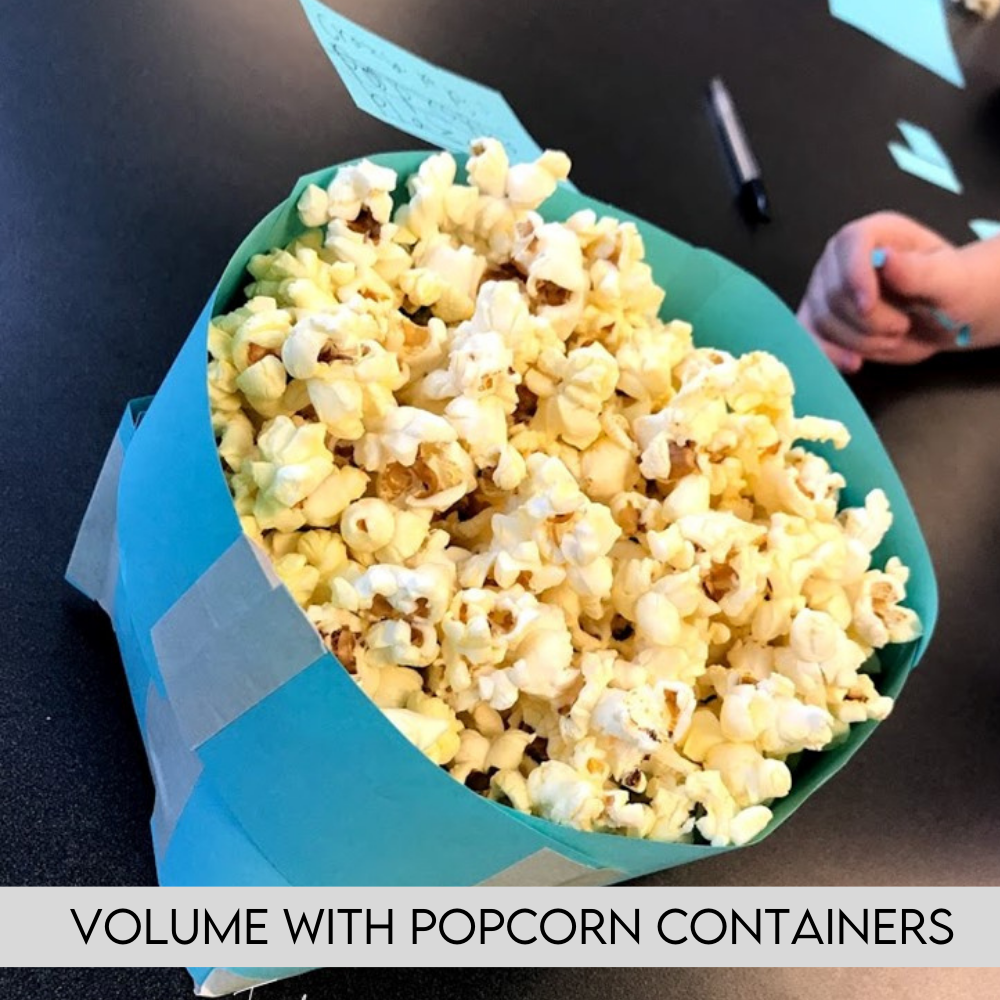
The popcorn challenge is just the most fun ever! Students must design and put together a container that will hold a specific amount of popcorn. They have a popcorn sample to help with the estimation and they know how much popcorn will be tested. Then they have to build the container.
I promise, this is amazing to watch. Some of them will take their sample batch and lay it out on paper and do some intricate measuring and then calculate to decide how much space more popcorn will take up. But, here’s the tricky part- they don’t consider the VOLUME. They think only of covering the bottom of their containers and they almost always make gigantic containers that are way too large. The beauty of this challenge is that they end up completely understanding that volume is dimensional. It’s a fabulous aha moment!
Focus on the M in STEM – Area and Perimeter
Okay, that takes care of measuring, averaging, calculating distances, volume, and dimensional shapes! What about area and perimeter?
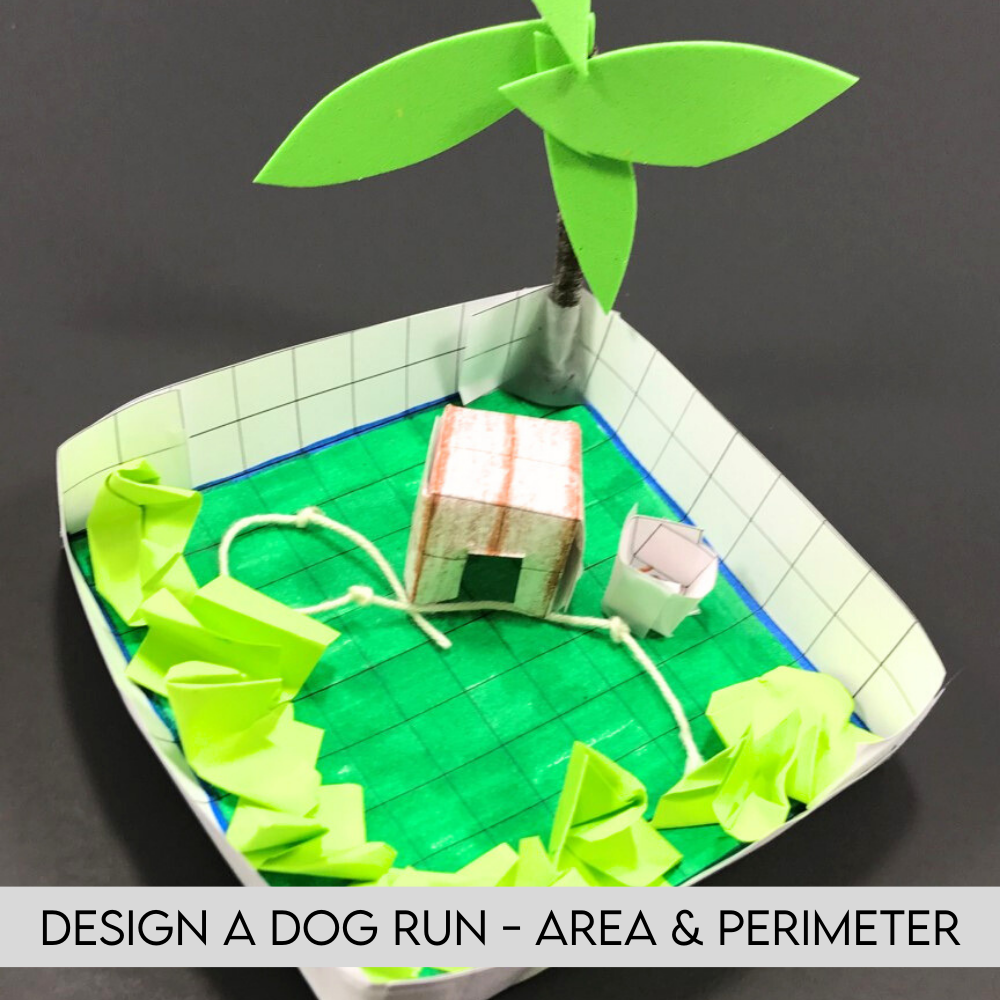
Students love using graph paper so this design challenge works great! After working through finding arrays of different areas and perimeters students are then challenged to creat a miniature dog run that must have a specific area and stay within a certain perimeter. They love adding all those cute details to their dog runs!
Focus on the M in STEM – Mean, Median, Modem, and Range
Whoa! That sounds fun, doesn’t it? And it is – because we use data gathered from something all students love to do- STACK CUPS!
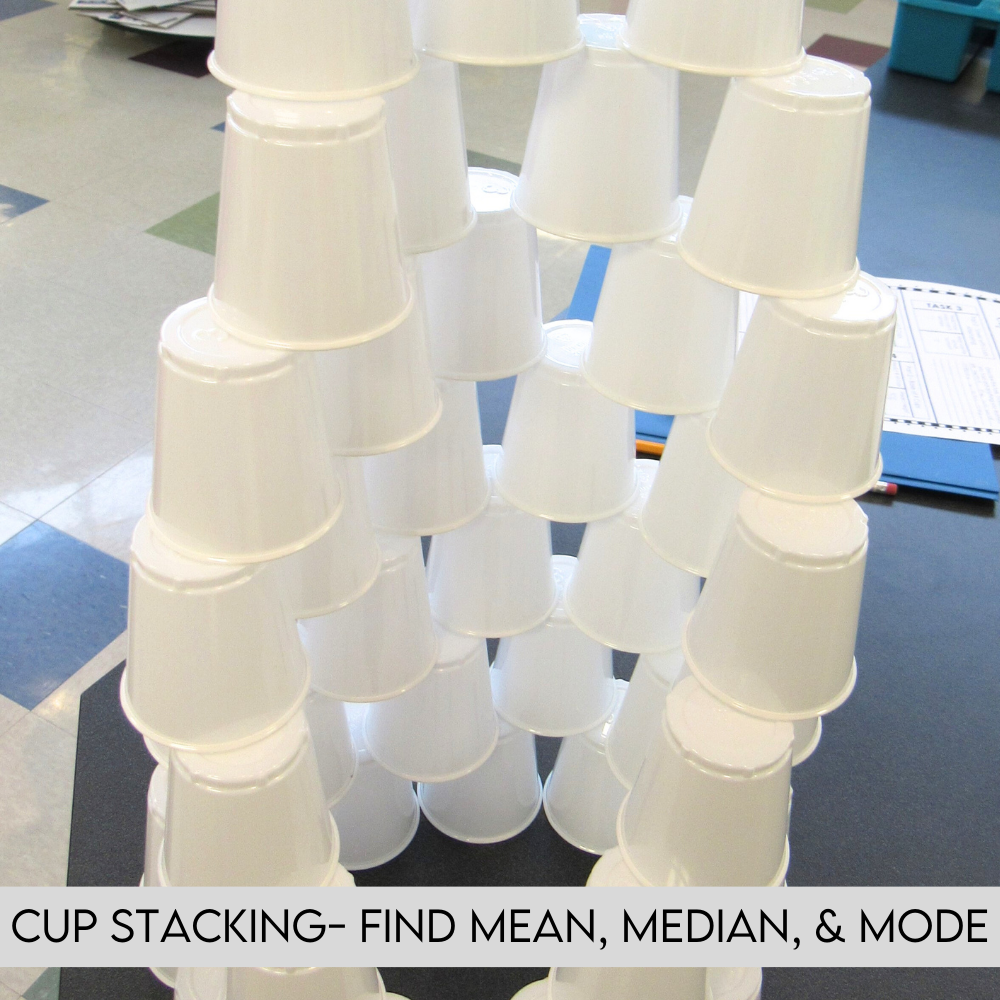
The first part of this math-based challenge is just stacking cups for fun! Then we tackle some events. Students stack cups to create a display to use as many cups as possible. They have a time limit. When time is up, teams count their cups and we start a class data chart.
Then we add MATH! Teams must use the data from the entire class and find the mean,. median, mode, and range of the numbers! This is amazing to try with upper elementary students. I do have to remind them how to complete those calculations and we do use calculators.
We complete several challenges in this activity. In the photo, you can see the task was to arrange the cup stacks in a circle.
With these examples, you can see math is a natural part of STEM and can also be the focus of a challenge. It is also great fun!
RELATED ARTICLES
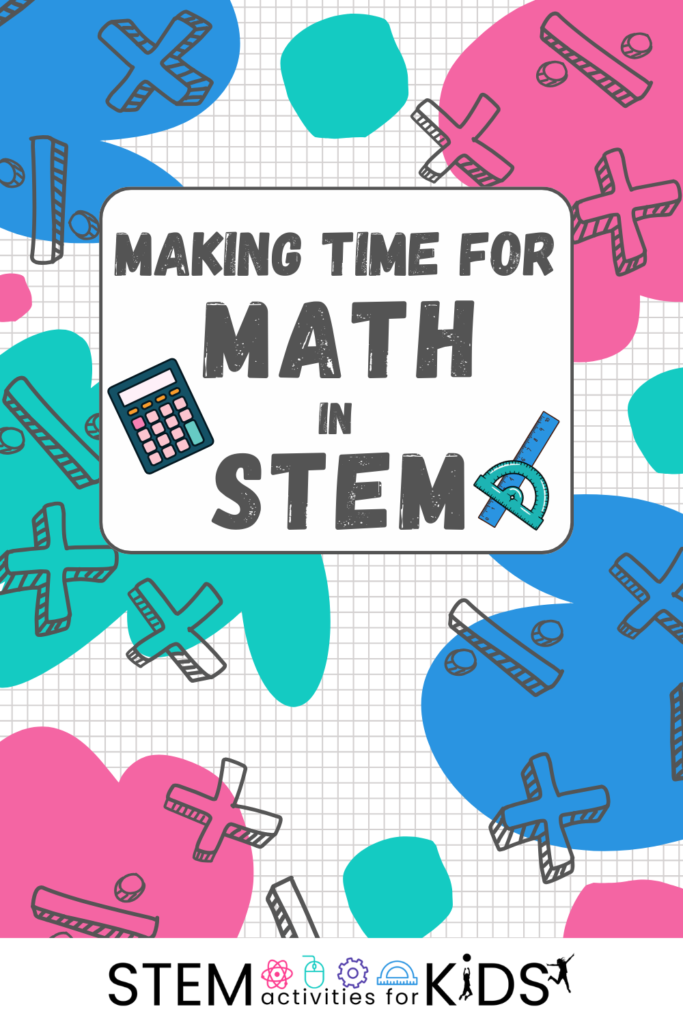
Join us here at STEM Activities for Kids soon for more posts to guide you along your way with STEM!
Save

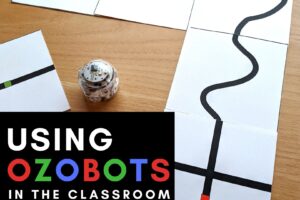
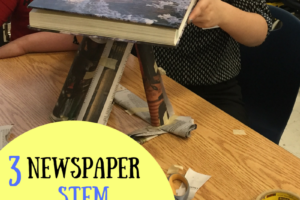
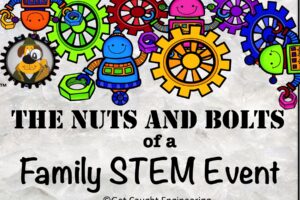
Leave a Reply
Your email is safe with us.